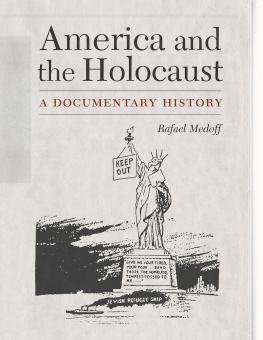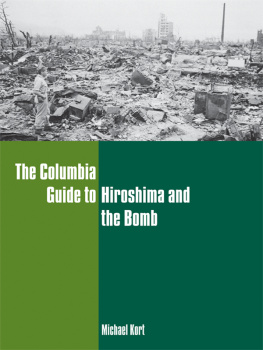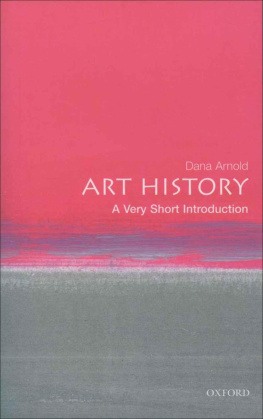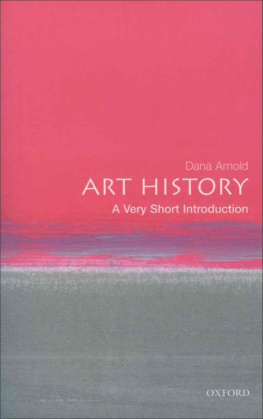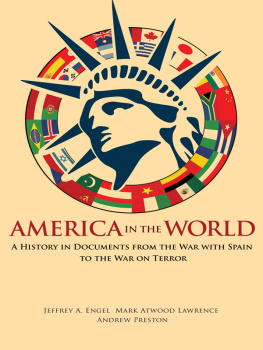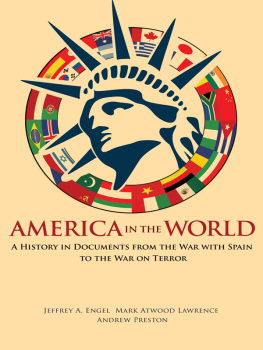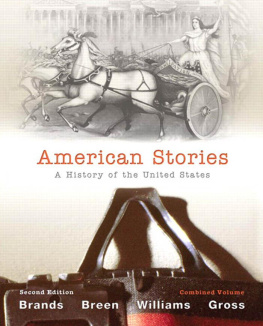CONTENTS
The United States in World War II
A Documentary History
The United States in World War II
A Documentary History
Edited, with an Introduction, by
Mark A. Stoler and Molly C. Michelmore
Hackett Publishing Company, Inc.
Indianapolis/Cambridge
Copyright 2018 by Hackett Publishing Company, Inc.
All rights reserved
Printed in the United States of America
21 20 19 18 1 2 3 4 5 6 7
For further information, please address
Hackett Publishing Company, Inc.
P.O. Box 44937
Indianapolis, Indiana 46244-0937
www.hackettpublishing.com
Cover design by Rick Todhunter
Interior design by Elizabeth L. Wilson
Composition by Aptara, Inc.
Though every reasonable effort has been made to trace the owners of the copyrighted materials included in this book, in some instances this has proven impossible. The Publisher will be glad to receive information leading to a more complete understanding of the permissions required for this book and in the meantime extend their apologies for any omissions.
Library of Congress Cataloging-in-Publication Data
Names: Stoler, Mark A., editor. | Michelmore, Molly C., editor.
Title: The United States in World War II : a documentary history / edited, with an introduction, by Mark Stoler and Molly C. Michelmore.
Description: Indianapolis : Hackett Publishing Company, Inc., [2018] | Includes bibliographical references.
Identifiers: LCCN 2018008248| ISBN 9781624667473 (pbk.) | ISBN 9781624667480 (cloth)
Subjects: LCSH: World War, 19391945United States. | United StatesHistory19331945.
Classification: LCC D769 .U4958 2018 | DDC 940.53/73dc23
LC record available at https://lccn.loc.gov/2018008248
ePub3 ISBN: 978-1-62466-770-1
Seven Myths of the Civil War . Edited, with an Introduction, by Wesley Moody.
Randolph S. Bourne, War and the Intellectuals: Collected Essays 19151919 . Edited, with Introduction, by Carl Resek.
Contents
The page numbers in curly braces {} correspond to the print edition of this title.
{xiii}
Contrary to popular belief, history does not consist of the rote memorization of facts about the past. Rather, it involves the selecting, organizing, and interpreting of facts about specific events to form a coherent pattern. And in doing so, historians often disagree with each other in their interpretations of a specific event.
That is definitely the case with regard to the Second World War. While the basic facts about the war may be clear, their organization and meaning are subject to multiple interpretations. Furthermore, these interpretations have changed over time and often reflect to an extent the time period in which they were written.
Early interpretations of U.S. participation in World War II echoed the debates over intervention that had taken place within the United States before Pearl Harbor. Reflecting the American decision to remain deeply involved in international affairs once the war ended, most of these interpretations focused on the international as opposed to the domestic aspects of the war, sided with the interventionist point of view, and condemned the anti-interventionists. Diplomatic and military historians divided, however, in their assessments of U.S. foreign and military policies after Pearl Harbor. Heavily influenced by the Soviet-American Cold War then in its early stages, some condemned American policy makers for naivete during the war in regard to the Soviet Union and what they labeled an apolitical U.S. military strategy, both of which enabled the USSR to control Eastern Europe while its Communist allies triumphed in China against the American-supported government of Chiang Kai-shek. Other historians, however, defended wartime U.S. policies and strategies in light of the diplomatic and military realities of the timemost notably the need to defeat Nazi Germany and its Italian and Japanese allies and the critical importance of the Soviet war effort to achieve that goal.
New perspectives and interpretations began to emerge in the 1970s and 1980s as a result of major U.S. and British declassifications of wartime government documents as well as the impact of the Vietnam War, which deeply divided Americans and led many of those who opposed it to question previous interpretations of World War II and develop new ones. Some of these directly challenged the pro-internationalist interpretations of their predecessors, noting the numerous negative impacts (such as dramatically increased executive power) that the anti-interventionists had correctly predicted. Others challenged the prevailing orthodoxy regarding {xiv} Soviet responsibility for the Cold War, emphasizing its wartime origins in British and American actions and inactions, from not establishing a second front against the Germans in western Europe until 1944 to using the atomic bomb to affect Soviet behavior rather than end the war quickly as previous historians had claimed. Still others focused on the Anglo-American special relationship during the war, noting the numerous and serious wartime disagreements between the two nations.
As Vietnam affected these new interpretations, so the black civil rights movement and the womens rights movements of the 1960s and 1970s led to a new emphasis in World War II scholarship on the American home front and domestic aspects of the war. This emphasis was also the result of the new social history then developing throughout the historical profession, instead of the previous and traditional diplomatic, military, and political history of the conflict.
The result of all these events and factors was a major questioning of the then-popular and widely held view of World War II as the good war for the United States. On many issues, most notably but far from exclusively the use of the atomic bomb against Japan, the result was a very heated controversy between those supporting traditional views and those espousing very different and at times diametrically opposed ones.
This is actually a pattern quite familiar in all historical studies whereby early, traditional interpretations are eventually attacked by those labeled revisionist historians because they try to revise the standard approach, sometimes dramatically. And in this pattern, a synthesis eventually emerges. Such a synthesis has already begun to develop on some controversial wartime issues, though far from all of them.
The chapters in this volume have been selected and organized so as to present documents on some of the most controversial and debated historical issues regarding the U.S. participation in the war: how and why the United States entered the conflict, mobilized at home, developed a global and Allied strategy; fought the war in Europe and in the Pacific and Far East; experienced revolutionary changes in life at home; created and made use of major advances in technology, science, and medicine; failed for the most part to deal with German and Japanese wartime atrocities; planned for the postwar world, both at home and internationally; and ended the war against Japan with nuclear weapons. Each chapter consists of a general introduction that explains the key facts and interpretive controversies about the specific issue, followed by seven to ten documents with brief introductions.
Preceding these chapter introductions and documents is a general introduction that briefly describes the origins and causes of World War II; the military successes and ensuing expansion of German and Japanese {xv} territory and power before U.S. entry; how and why the United States and its allies were able by 1945 to totally defeat the Axis Powers; and the impact of the war on both the nation and international relations in general. The ensuing chapters are arranged both chronologically and topically, beginning with the road to U.S. entry into the war and ending with the atomic bomb and surrender of Japan. Both the chapter and the document introductions raise a series of questions to consider, many of which have divided and continue to divide World War II historians.




